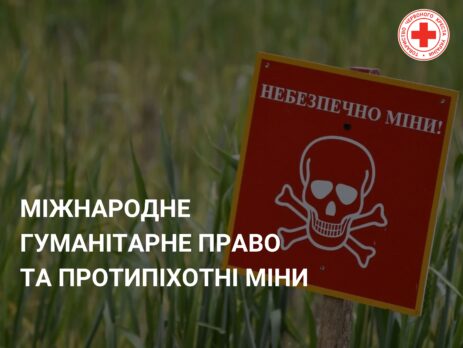International Humanitarian Law (IHL) and Anti-Personnel Mines
In December 2005, the UN General Assembly declared 4 April as the International Day for Mine Awareness and Assistance in Mine Action. Today, Ukraine is the most heavily mined country in the world. According to the State Emergency Service, approximately 139,000 square kilometres (23% of the country’s total area) are potentially dangerous due to mines. According to the Ministry of Defence, 336 people, including 18 children, have been killed by explosive devices since the start of the full-scale invasion. Additionally, 825 people have been injured, including 92 children. [1].
On 18 September 1997, the Convention on the Prohibition of the Use, Stockpiling, Production and Transfer of Anti-Personnel Mines and on their Destruction (commonly known as the Anti-Personnel Mine Ban Convention or APMBC) was adopted at a diplomatic conference in Oslo, Norway. The Convention was opened for signature on 3 December 1997 in Ottawa, Canada, and is often referred to as the Ottawa Treaty. In February 1999, Ukraine signed the Convention, and the Verkhovna Rada (the Ukrainian Parliament) ratified it on 18 May 2005. [2].

Photo: The opening of the Ottawa Treaty signing ceremony
Thus, the Ottawa Treaty is one of the key multilateral international treaties in the field of international humanitarian law (IHL) that prohibits the use and production of anti-personnel mines. The development and signing of this treaty were made possible, in particular, by the efforts of the International Campaign to Ban Landmines (ICBL), which was awarded the Nobel Peace Prize in 1997.
In addition to the APMBC, the use of mines is regulated by the Convention on Prohibitions or Restrictions on the Use of Certain Conventional Weapons (Geneva, 10 October 1980). Specifically, Protocol II prohibits or restricts the use of landmines and booby traps (as amended on 3 May 1996). [3]. Protocol V outlines obligations and best practices for the clearance of explosive remnants of war (28 November 2003). [4]
The Ukrainian Red Cross continues to raise public awareness of key international humanitarian law instruments that protect victims of war and restrict the methods and means of warfare.

